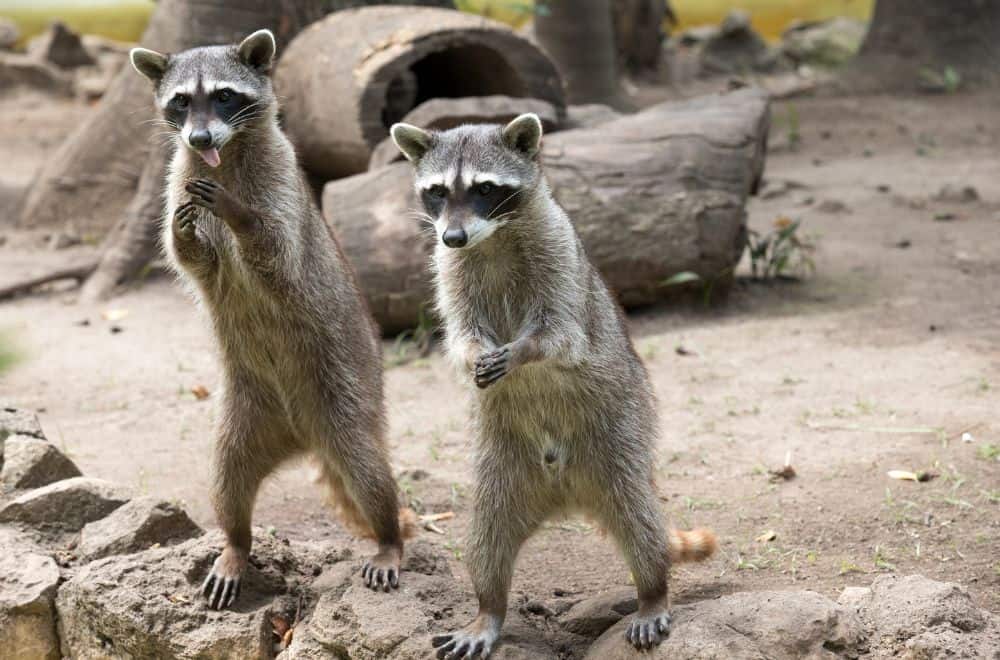For humans, raccoons can sometimes be troublesome neighbors. But to some animals, they are deadly predators.
We’re going to take a look at the animals that raccoons eat. And we’ll check out some other interesting facts about their eating habitats.
Ready to learn more? Let’s get started!
The omnivorous raccoon

Raccoons are omnivores, which means they eat both plants and animals. The veggie side of their diet consists of things like nuts, seeds, and fruits. But they’ll eat animals of different shapes and sizes too.
They’re opportunist feeders, chowing down on whatever they can get their paws on. And that means their diet often varies a lot through the year. There are far more nuts and berries in the fall, for example, than in spring.
And it’s important for raccoons to eat a diet that’s high in fat during the fall. That will store up fat reserves that they can draw on during winter, when food is in short supply.
It stands to reason that exactly what a raccoon eats will depend on its geographical location too. Japanese raccoons will have access to different plants and critters than American ones.
But in most places, a raccoon’s diet is split fairly evenly into three categories: plants, vertebrates and invertebrates. They’ll probably eat slightly more plants and slightly fewer vertebrates, with invertebrates falling in the middle.
Let’s take a closer look at what animals form part of a raccoon’s diet.
Animals That Raccoons Eat
Vertebrates
In most locations, vertebrates make up the smallest part of the raccoon’s diet. That’s simply because invertebrates tend to be more plentiful. But there’s still a huge variety in what raccoons will eat.
1. Aquatic Life
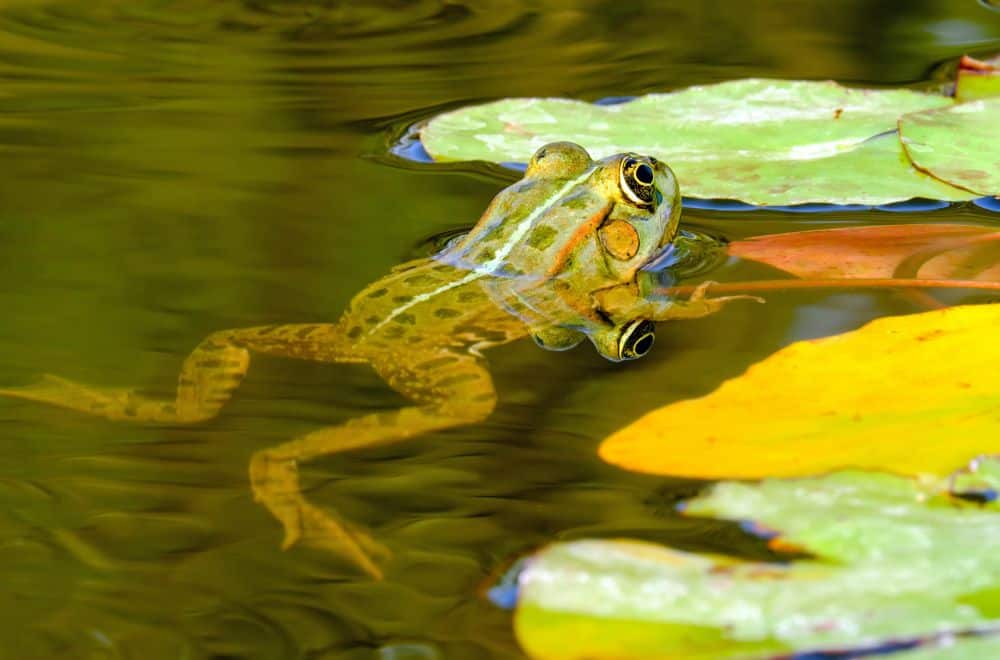
Raccoons won’t track or lie in wait for their prey. That consumes too much energy, when there are plenty of other foodstuffs they can find with less effort. But if a tasty morsel hops or swims into their path, the chances are the raccoon will try to eat it.
Frogs are a classic raccoon delicacy! While they’re agile, they’re easy to overpower and eat if a raccoon gets lucky and catches one. And they’re often found in shallow water, so the raccoon won’t need to get too wet in the process.
And as long as the water is shallow, raccoons will happily eat a range of other aquatic life too. Fish, turtles and snakes can all feature on the raccoon menu. And because raccoon’s paws are very sensitive, they are experts at scooping their prey out of the water.
All these foods provide a good source of protein for the raccoon. And they contain other nutrients too, including minerals like zinc and iron.
2. On the Ground
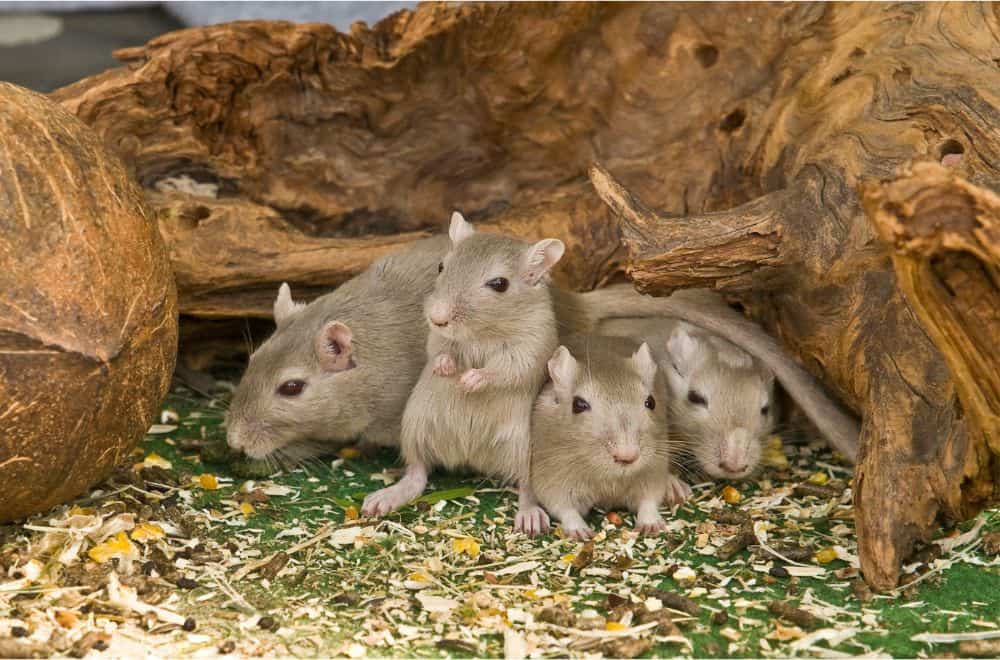
Just as with aquatic life, the raccoon’s physical attributes determine what ground-dwelling animals end up as dinner. Raccoons know not to bother animals that are large, fast or fierce – they’ll probably come off worse!
But they will eat smaller animals, particularly rodents like squirrels or mice. So having a raccoon in your neighborhood can be good news for managing the rodent population.
It’s not all positive, though. Raccoons living near farms won’t confine their diet to “problem” animals. They’ve been known to eat chickens. And they’ll certainly steal eggs if they think they can get away with it.
They’ll also feed on the carcasses of dead animals, as long as they’re fairly fresh.
All these foods provide plenty of protein for the raccoon.
3. In the Air
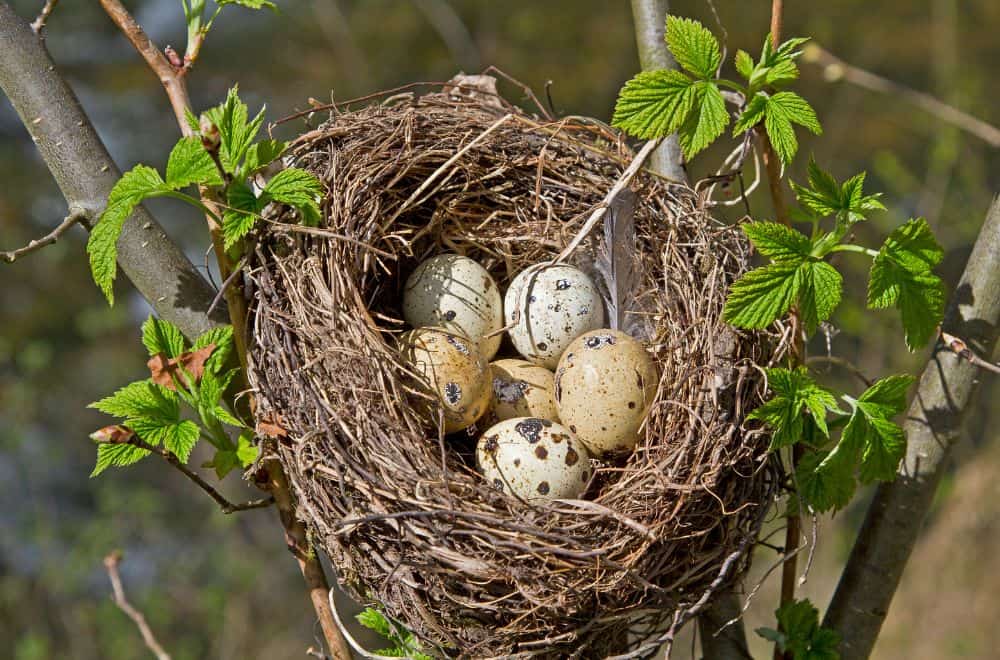
No, raccoons can’t fly! But they are excellent climbers.
That means it’s not difficult for them to shimmy up trees to raid birds’ nests. They’ll eat both eggs and hatchlings, both great sources of protein. Eggs are also a valuable source of calcium for the raccoon.
Incidentally, they’re just as likely to search at ground level for the eggs of reptiles.
Invertebrates
Invertebrates – creatures without a backbone – tend to be widely available to raccoons. And just as with vertebrates, there’s a lot of variety in the types they’ll eat.
4. Clams
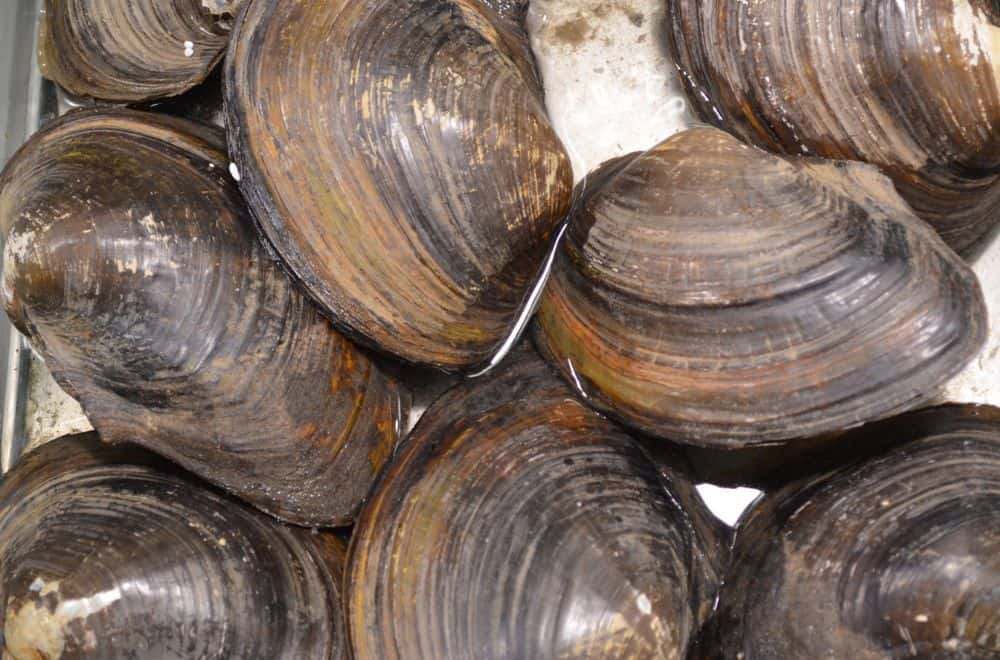
Clams are a perfect choice for an omnivore who doesn’t want to expend too much energy getting dinner! They can burrow into mud or silt, but they don’t otherwise move around a lot. And they live in both freshwater and marine environments.
So if a raccoon is near a water source, clams are an easy catch. They’re a great source of protein, as well as iron, sodium and calcium.
5. Crawfish
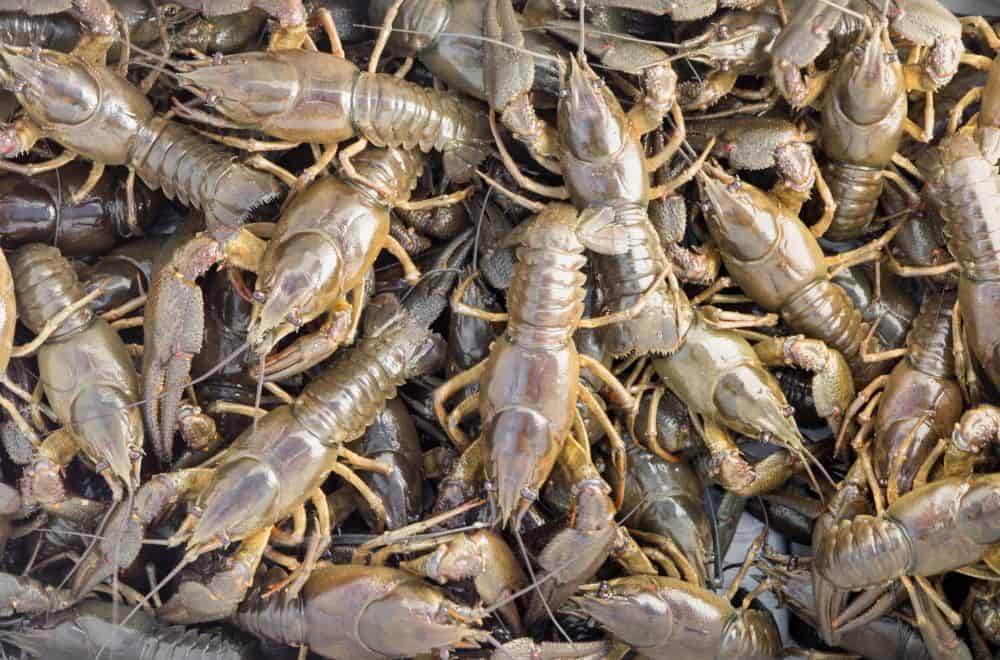
Crawfish, also known as crayfish, are every bit as delicious to raccoons as they are to most humans! And they’re a ready source of food, being found pretty much anywhere there’s water. They can tolerate habitats as varied as fresh, flowing streams, and standing water in a ditch.
They’re another excellent source of protein, and also contain vitamins B6 and B12.
6. Slugs and snails
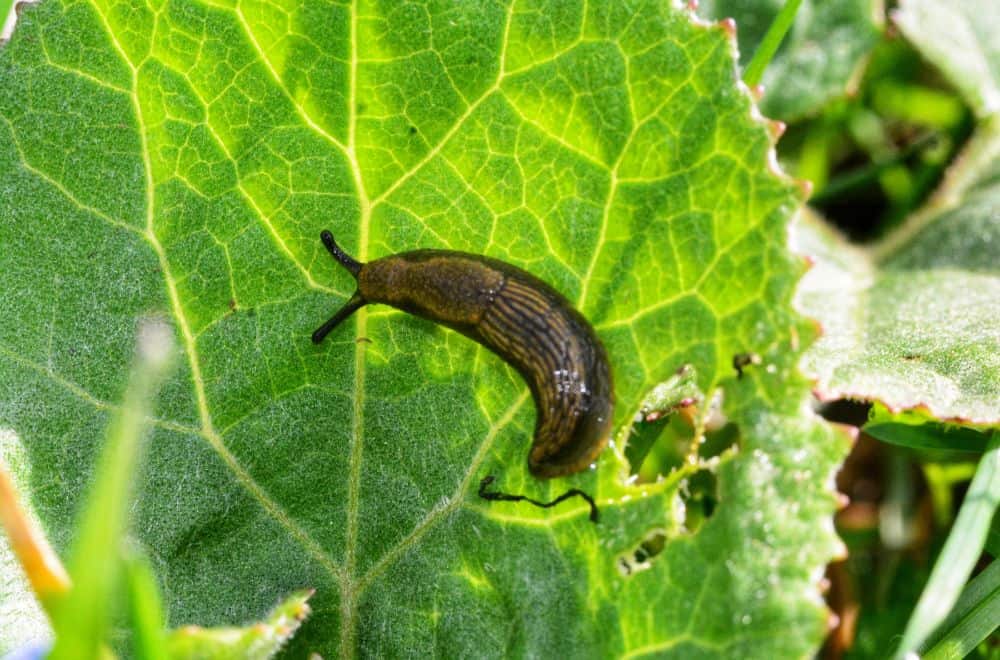
Molluscs like slugs and snails also often find themselves on the raccoon menu. They are slow moving, so easy for the raccoon to catch without using up much energy.
And while they may be small, they consist of 18 per cent protein, plus sodium and a tiny amount of fat.
Slugs and snails, of course, do untold damage to garden plants. So having a raccoon in the vicinity can have some advantages for gardeners.
7. Insects and worms
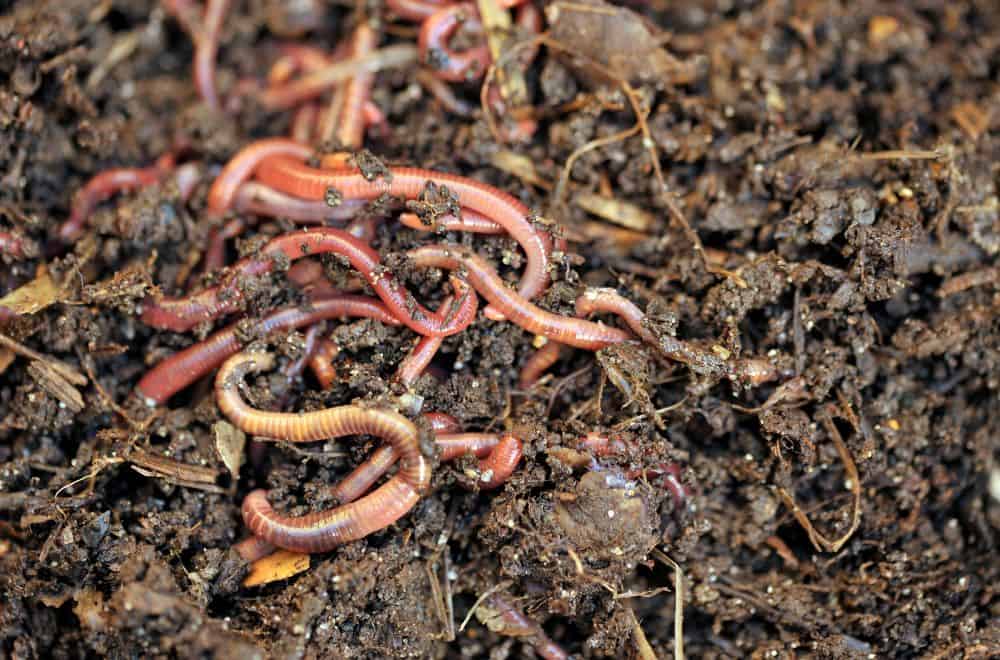
Other invertebrates that fit into the small but plentiful category are insects and earthworms. Raccoons aren’t fussy eaters, and they’re not bothered about the species!
Bugs of all kinds contain protein. And while the raccoon might not get much of it from an individual critter, the plentiful supply means it quickly adds up.
Of course, earthworms are good news for gardeners, because they aerate the soil. So while gardeners may be happy with a raccoon munching on plant-eaters like snails, they’ll be less happy if the local earthworm population takes a hit.
Other foods for raccoons
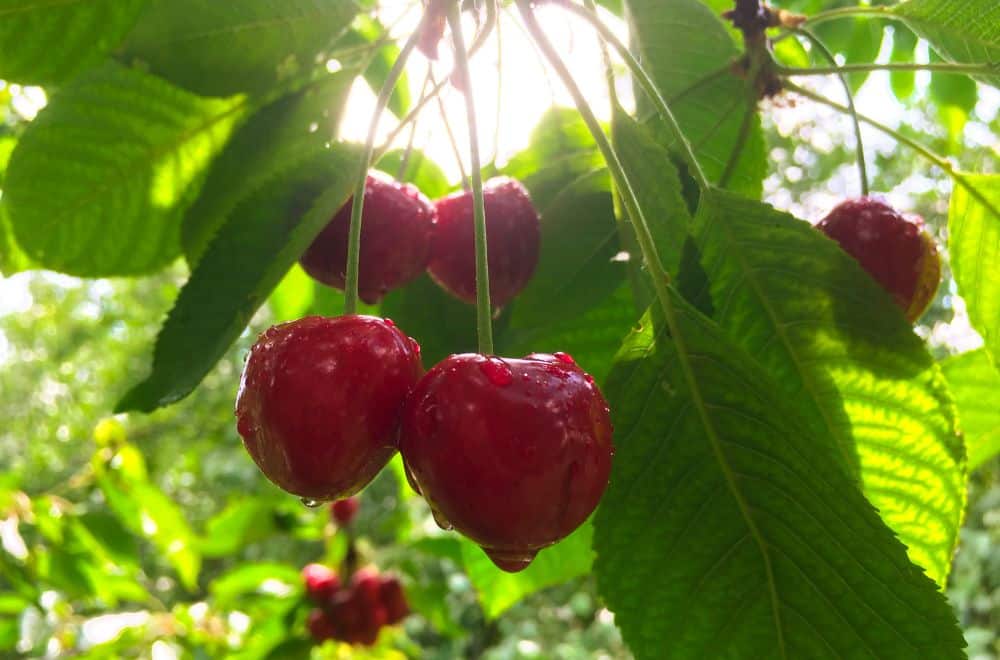
Raccoons will eat pretty much any food, as long as it isn’t rotting or mildewed. So it’s easy to attract a raccoon to your property unintentionally if you’re providing a food source.
Any foodstuffs left unsecured will be a target. That includes trash cans, birdfeed, and pet food. Keep your trash cans closed up tight. If you can, avoid feeding pets outside too. But if that’s not possible, clear away any food they don’t eat promptly.
There’s not a lot you can do about bird feeders, realistically. But you can make sure any seeds or nuts that are in storage are properly sealed to avoid them becoming a raccoon buffet.
And watch out if you have fruit trees! Apples and cherries are amongst raccoons’ favorite treats. (That could be a good thing, of course, if you find you have more fruit than you know what to do with!)
Humankind’s tendency to unwittingly provide food for raccoons means that these animals are very successful in suburban areas. Raccoons in the wild typically weigh around 30 pounds. But their suburban cousins average twice that weight.
Do raccoons really wash their food?
If you’ve ever observed a raccoon eating, you’ll probably have seen it do something rather surprising. It will often dip its food in water, or rub at it with its hands, before beginning its meal.
This behavior is so characteristic, in fact, that it’s even reflected in the raccoon’s scientific name. The species is known as Procyon lotor – “lotor” is Latin for “one who washes”. (Procyon is the genus name, and it means “before dog”.)
But are raccoons really washing their food? Or are they wetting it, as some people once thought, because they don’t have saliva glands?
Scientists at London Zoo looked at this question in detail in a 1961 study.
They found that the purpose of dunking the food in water didn’t seem to relate to cleaning. The raccoons they observed tended to immerse meat rather than plants in water. But they didn’t dunk earthworms, amongst the grubbiest of all menu items!
And the answer isn’t to do with missing saliva, either. Raccoons have fully functioning saliva glands, just like humans.
The scientists instead theorized that raccoons were using their sensitive paws to find out more about the food before they ate it. But what has that got to do with wetting it?
Another study in 1986 answered that question. It found that when raccoons’ paws got wet, they became dramatically more sensitive. So dunking their food means they can get a much better indication of its texture, firmness and so on.
It’s the raccoon equivalent of taking a big sniff of that cheesy pizza before your first bite!
Animals that raccoons eat: a quickfire summary
That brings us to the end of our look at the diet of the raccoon. These cheeky chaps will eat pretty much anything. And when it comes to animals, the raccoon menu ranges from snails to mice, clams to frogs!
Some of their dietary choices can be more helpful than others to humans. Gardeners may be pleased if raccoons help to keep down the local population of slugs or mice. But farmers won’t feel the same way if their chickens or eggs end up as a raccoon dinner.
If you want to avoid encouraging raccoons to your property, the key is to keep any food sources tightly secured. That includes trash cans, pet food, any food stored in outhouses, and even bird feed.
